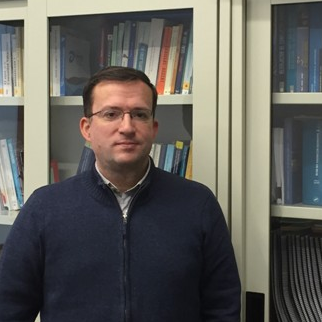Hydroeconomic Analysis for Sustainable Water Management
A special issue of Water (ISSN 2073-4441). This special issue belongs to the section "Water Resources Management, Policy and Governance".
Deadline for manuscript submissions: closed (31 August 2018) | Viewed by 51195
Special Issue Editors
Interests: hydro-economic models; integrated water management; economics of agricultural; consumptive water use; climate change adaptation; engineering economics; modeling agriculture; water management
Special Issues, Collections and Topics in MDPI journals
Interests: hydropower; urban water use; hydro-economic models; water management
Special Issues, Collections and Topics in MDPI journals
Interests: agricultural production; dynamic programming; hydro-economic models; water management; consumptive use; economic analysis; policy analysis
Special Issue Information
Dear Colleagues,
As a scarce resource, water often has economic value connected to its use. This value is employed in various use decisions, including irrigation, production proceses, sanitation, hydropower, recreation, and ecosystem services. However, water economic value often plays a decimated role in water management, even when water is reclaimed through costly storage and conveyance infrastructure, and shared among competing users. The common approach to water as an insdisputable requirement, rather than a variable and uncertain economic resource, fails to properly signal its scarcity to society, leading to inefficient use, unnecesarily large infrastructure, and lost development opportunities. Hydro-economic models provide a framework to respresent economic values of water under various uses, infrastructure, and hydrologic and environmental features within regions in a consistent manner This Special Issue provides an overview of economic water valuation and hydroeconomic models. Concepts are reinforced with case studies involving management, modeling, and analysis involving the economic value of water, and its application in improving the economic efficiency of water systems. Prospects for hydro-economic models in managing water resources in the future are discussed.
Assoc. Prof. Josue Medellin-Azuara
Prof. Guilherme F. Marqes
Prof. Amaury Tilmant
Prof. Manuel Pulido-Velazquez
Guest Editors
Manuscript Submission Information
Manuscripts should be submitted online at www.mdpi.com by registering and logging in to this website. Once you are registered, click here to go to the submission form. Manuscripts can be submitted until the deadline. All submissions that pass pre-check are peer-reviewed. Accepted papers will be published continuously in the journal (as soon as accepted) and will be listed together on the special issue website. Research articles, review articles as well as short communications are invited. For planned papers, a title and short abstract (about 100 words) can be sent to the Editorial Office for announcement on this website.
Submitted manuscripts should not have been published previously, nor be under consideration for publication elsewhere (except conference proceedings papers). All manuscripts are thoroughly refereed through a single-blind peer-review process. A guide for authors and other relevant information for submission of manuscripts is available on the Instructions for Authors page. Water is an international peer-reviewed open access semimonthly journal published by MDPI.
Please visit the Instructions for Authors page before submitting a manuscript. The Article Processing Charge (APC) for publication in this open access journal is 2600 CHF (Swiss Francs). Submitted papers should be well formatted and use good English. Authors may use MDPI's English editing service prior to publication or during author revisions.
Keywords
-
Economic value of the water
-
Economic instruments for water management
-
Marginal benefits of water use
-
Water tarifs
-
Water scarcity
-
Scarcity costs
-
Water resources planning and management
-
Water allocation and decision making
Benefits of Publishing in a Special Issue
- Ease of navigation: Grouping papers by topic helps scholars navigate broad scope journals more efficiently.
- Greater discoverability: Special Issues support the reach and impact of scientific research. Articles in Special Issues are more discoverable and cited more frequently.
- Expansion of research network: Special Issues facilitate connections among authors, fostering scientific collaborations.
- External promotion: Articles in Special Issues are often promoted through the journal's social media, increasing their visibility.
- e-Book format: Special Issues with more than 10 articles can be published as dedicated e-books, ensuring wide and rapid dissemination.
Further information on MDPI's Special Issue polices can be found here.








